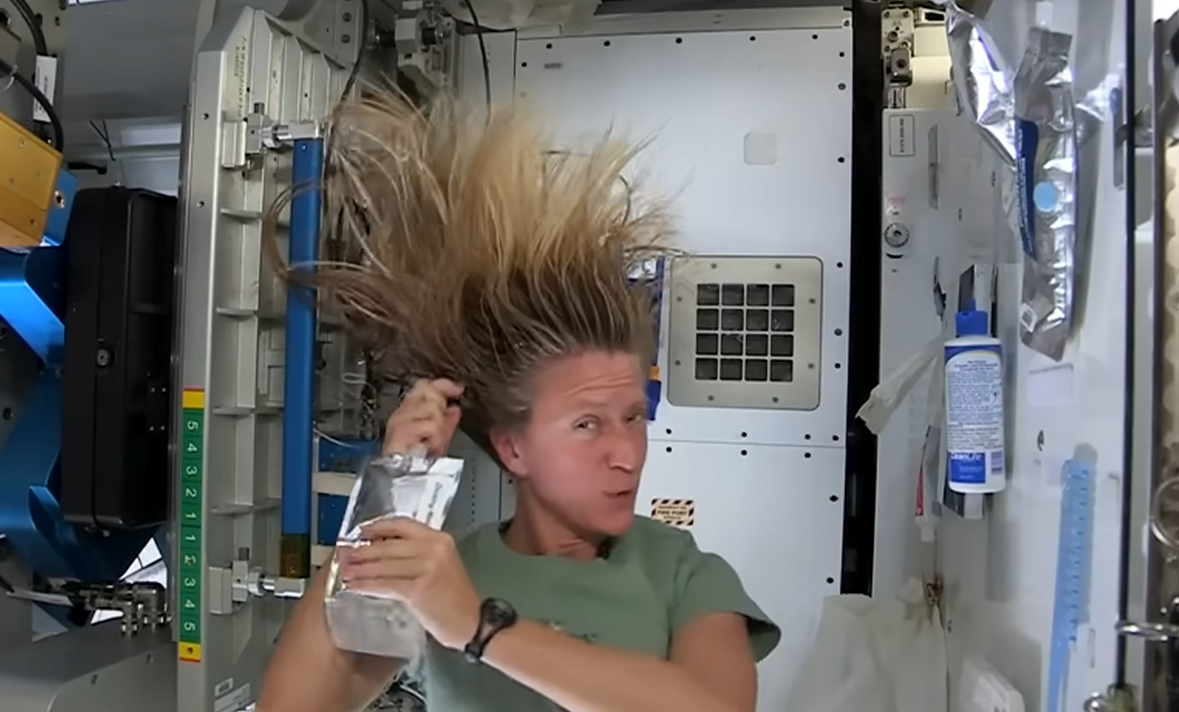#93 Vλλ
The Hail Mary is equipped with a wide range of scientific equipment and the “collected knowledge of humankind” 11.11 yet when Ryland wishes for a shower and clean clothes, he finds the ship’s offerings somewhat lacking.
For bathing, he discovers a “sponge bath zone... just a sink with sponges that comes out of the wall” 06.178. When he requests a laundry function from the computer, robotic arms take his dirty jumpsuit and store it, apparently never to be cleaned. Although Project Hail Mary depicts a crewed mission quite unlike anything we’ve seen before, the hygiene options aboard the ship are similar to what modern, real-world astronauts experience.
The International Space Station lacks showers; as Mike Fossum explains, “the water doesn’t know how to find the drain”. Instead, astronauts wipe themselves down with a wet, soapy towel— essentially the same sponge bath method that Ryland uses. When washing hair, water and no-rinse shampoo must be applied directly to the scalp to avoid the liquids “getting away from you”. Below, Karen Nyberg demonstrates the process of microgravity hair washing:

Aboard the Hail Mary, Ryland devises a makeshift laundry setup, at least for the purpose of germ-killing: “All this technology and I haven’t seen any means of cleaning clothing. So I’ve taken to soaking it in water and putting it in the lab freezer for a while.” 13.130 Water is a precious resource on the International Space Station, and even soaking dirty clothes would consume too much of it. Astronauts instead stretch the lifetime of their clothes as long as possible, eventually disposing of clothing that becomes too dirty. These discarded clothes, along with all other space station waste, burn up in the Earth’s atmosphere.
In 2021, summer interns at NASA’s Glenn Research Center devised creative solutions to the current lack of laundry facilities in space. We are particularly entertained by one group’s acronym, SLUSH: Screw-Like Undirtying Spinning Hardware.
I can smell my own body odor. Not a good sign.
13.130